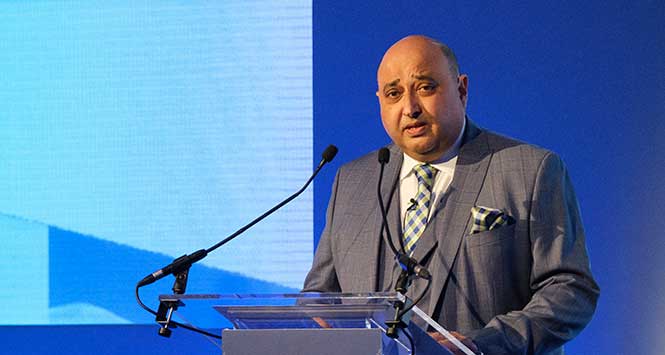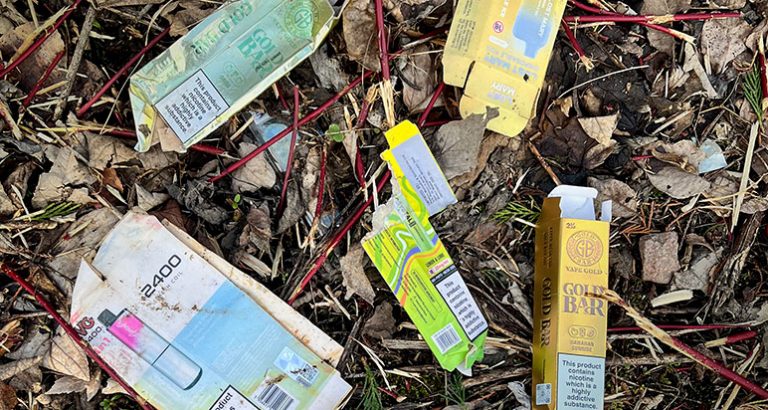With DRS postponed yet again, many retailers have breathed a sigh of relief – but with only a couple of years to go until the next implementation date, there’s plenty to ponder, says SGF Chief Executive Pete Cheema.
By Antony Begley
Straight off the bat, SGF Chief Executive Pete Cheema leans forward in his chair and says: “It’s utterly critical that it’s made clear that SGF supports a Deposit Return Scheme (DRS) in Scotland. We understand the importance of tackling the environmental challenges we face, and we see that local retailers in Scotland have a pivotal role to play.”
He takes a deep breath, sits back, and adds: “But we need a DRS that’s fit for purpose. We need a DRS that is cost-neutral for retailers, just as it clearly states in the legislation. That’s all we’re asking for.”
Growing challenges
With that, Cheema relaxes a little. Enough, in fact, to laugh at the first question: where are we now with DRS?
“Well, it was a bittersweet moment when DRS was postponed. As an industry we were relieved because the DRS as presented by the Scottish Government simply wasn’t workable, but we also understood what it meant for Scotland.
“Where we are now though is a tough question to answer. The challenges we faced getting a workable DRS in Scotland were enormous, so when you think of the challenges that will face us delivering a UK-wide system, it’s pretty daunting. You’re dealing with not one but four governments and even then, there isn’t even a sitting government in Northern Ireland, so it looks like a huge, huge task.”
That task is also complicated by the fact that, presumably, England will take the lead on building an ‘interoperable’ scheme that, somehow, Scotland, Wales and Northern Ireland will follow. The elephant in the room here is that England hasn’t yet built its own scheme, so there’s nothing to ‘interoperate’ with.
“The industry collectively relieved a sigh of relief after the DRS announcement but what is really worrying is that we now have more hurdles to clear than we did when we were just working on a Scottish system – and there’s not a lot of time to get everything in place.
“Frankly, we couldn’t get everything in place on time just in Scotland, so it’s worrying that we’re going to have to do it all again but across four nations, not one, and all by 2025.”
Pressure mounting
And as if the politicians building a fit-for-purpose and legal DRS didn’t have enough to keep them busy, the to-do list seems to be growing, rather than shrinking.
“Obviously Abdul [Majid] recently won his judicial review case against the DRS administrator Circularity Scotland (CSL),” says Cheema. “Primarily Abdul was challenging the legality of the retailer handling fees which CSL was seeking to impose on retailers – but the success of his case throws up a whole raft of new issues around the legality of the system in Scotland.
“Then you have CSL being placed into administration, and we don’t know yet whether CSL will be replaced by a new body or whether we are looking at a UK-wide administrator, presumably based in England.
“And in addition, you have both the Scottish and Welsh Governments making strong statements about how they do not intend to have an English DRS system imposed on them. These are not the sorts of issues that get resolved quickly – and that’s not forgetting that Parliament is in recess for several months so we’re not likely to see anything much happen before September.”
And these are only the big picture challenges, the tip of the proverbial DRS iceberg. There is a world of smaller but no less critical real-world challenges to face for retailers, producers, wholesalers and more.
“It’s a sorry situation, it really is,” says Cheema.
Fresh approach
In the great DRS debacle, however, one thing has largely been forgotten: the fact that we are facing a global climate crisis and there is a dire need for governments around the world to face up to their responsibilities. DRS is, despite the evidence of the last few years, one of the simpler solutions that has been proven to be extremely effective across the world and would help Scotland achieve its sustainability goals, something that everyone living and working in Scotland has the moral obligation to take seriously.
A recent Circularity Gap Report from Zero Waste Scotland shows that only 1.3% of the resources Scotland uses are recycled back into the economy, with over 98% of Scotland’s material use coming from virgin resources. That means Scotland’s per capita material footprint is 21.7 tonnes, nearly double the global average of 11.9 tonnes.
To put it bluntly, the need for DRS – a cost neutral, fit-for-purpose DRS – is greater than ever.
Roadmap
So how do we get there? “I think the most important thing that legislators can do when creating a UK-wide DRS is to actually engage with industry,” says Cheema. “During the DRS debacle in Scotland, the Scottish Government and CSL repeatedly stated that they regularly consulted with industry and their actions were ‘industry-led’. I’m sorry, but that just wasn’t my experience.
“Scottish Grocers’ Federation represents more Return Point Operators than any other organisation, yet we were regularly excluded from important conversations and key meetings. We had to battle time and again, just to be allowed to contribute, which I find unacceptable, as local retailers in Scotland will provide more Return Points than any other sector.”
Frustration aside, Cheema remains philosophical, if understandably sceptical, about how we actually get to D-Day and deliver a working DRS.
“In a sense we haven’t finished the first phase of DRS, if you want to call it that. DRS in Scotland has been postponed but there’s a lot of issues that have yet to be cleared up. We’re likely to see suppliers taking legal action, you’ve got Biffa having invested around £80m in sites around Scotland that they can’t use for at least two years, you’ve got supermarkets who have flattened car parks to install DRS points. You’ve got Reverse Vending Machine manufacturers who have invested millions in Scotland in preparation for various go-live dates. The Scottish National Investment Bank put £9m into DRS. There’s a lot of people who made big investments in good faith having been told time and again that DRS was definitely happening on schedule. And at SGF, we invested endless hours and energy and people in the whole process and it’s all, effectively, come to naught. We’ve all lost out.”
And then, of course, there is the human side, as Cheema points out: “And that’s before you get to the 55 employees at CSL and the countless people being made redundant across Scotland as the industry scales back its operations because DRS won’t go live until 2025 at the earliest.”
Next steps?
Perhaps the most frustrating thing of all, however, is the current lack of urgency around DRS. “It’s been kicked into the long grass again, the politicians are in recess for months and DRS has very quickly become a non-issue,” reflects Cheema. “We’ve been here before, of course. This is exactly what happened the last time DRS was postponed. It became a forgotten issue and it was only picked up again after it was too late, as we all discovered to our cost.
“We can’t let that happen again. It would be unforgiveable.”
So does Cheema believe it can be done in time? A wry smile precedes his answer: “Honestly, it’s hard to see how it can all be sorted in such a relatively short space of time, particularly as there seems no sense of urgency at the moment. There are so many challenges to face and every stakeholder needs to start addressing these issues right now.
“At SGF, we’ll do all that we can as usual to represent the needs of our members but there’s a lot to be done and it will require a monumental effort on the part of a lot of individuals and organisations to get there by 2025.”
A politician’s answer to a simple question, then, but Cheema has had to play politics for a long time on DRS – and it’s likely his political skills will be called on again in future.
- A recent Circularity Gap Report from Zero Waste Scotland shows that only 1.3% of the resources Scotland uses are recycled back into the economy, with over 98% of Scotland’s material use coming from virgin resources.
- That means Scotland’s per capita material footprint is 21.7 tonnes, nearly double the global average of 11.9 tonnes. The report concludes that consumption in Scotland is unsustainably high.
- The latest available figures from the Scottish Environmental Protection Agency show that household recycling rates in Scotland remain stuck at 42% and that the amount of Scottish household waste landfilled in 2021 was 664,000 tonnes, an increase of 4,000 tonnes (0.6%) from 2020.






